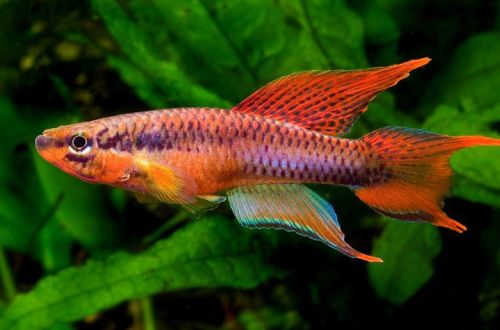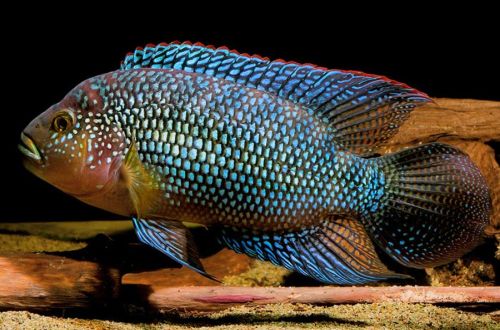
Ancitrus-Parana
Greater Ancitrus Parana, scientific name Megalancistrus parananus, belongs to the family Loricariidae (Mail catfish). The name fully reflects the size of this species. Catfish reaches more than half a meter in length. Such a large fish will need an appropriate aquarium and special maintenance. In addition, it is not very friendly disposition, which significantly limits the number of compatible species. Not recommended for beginner aquarists.

Contents
Habitat
It comes from a vast region in central South America. Inhabits the Paraná river basin, the second longest on the continent, flowing through the territory of Paraguay, Uruguay, southern Brazil and Argentina. Found throughout the course.
Brief information:
- The volume of the aquarium – from 600 liters.
- Temperature – 20-28°C
- Value pH — 6.0–7.5
- Water hardness – 2–12 dGH
- Substrate type – any
- Lighting – subdued, moderate
- Brackish water – no
- Water movement – any
- The size of the fish is up to 58 cm.
- Food – any food
- Temperament – inhospitable
- Keeping alone or in a group, but in a very large aquarium
Description
Adult individuals reach a length of up to 58 cm. Catfish has a somewhat flattened body with large fins and a massive head. The entire surface of the body is dotted with many sharp spines, and the first rays of the fins are modified into sharp spikes. The coloration consists of black large spots and on a gray background, while in young fish the background is yellow-brown.
Food
Omnivorous species. The basis of the diet should be fresh or frozen foods in the form of earthworms, bloodworms, mosquito larvae, shrimp. Complementing the diet will be herbal supplements, such as spirulina flakes, pieces of green vegetables and fruits. Catfish can also eat some aquatic plants with soft, delicate leaves.
Maintenance and care, arrangement of the aquarium
Considering the size of adult fish and the peculiarities of their behavior, the minimum volume of an aquarium for one Ancitrus Parana starts from 600–700 liters. The most natural catfish will look in subdued lighting among snags and thickets of aquatic plants.
The content of such a large fish is associated with a number of difficulties. First of all, this refers to the need to ensure high quality of water in an acceptable range of temperatures and values of hydrochemical parameters. This requires weekly replacement of part of the water (20–30% of the volume) with fresh water and regular removal of organic waste (food debris, excrement). It is also mandatory to place a productive filtration system and other equipment. Without automating the aquarium cleaning process, it will take a lot of time and effort.
Behavior and Compatibility
Territorial species, aggressive towards other fish encroaching on its area at the bottom of the aquarium. It is acceptable to combine with other types of comparable size, provided that they are in spacious tanks of several thousand liters.
Breeding / breeding
At the time of writing, no successful cases of breeding this species in home aquaria have been recorded. For sale are sourced from commercial fish farms or caught from the wild.
Fish diseases
The cause of most diseases is unsuitable conditions of detention. A stable habitat will be the key to successful keeping. In the event of symptoms of the disease, first of all, the quality of the water should be checked and, if deviations are found, measures should be taken to correct the situation. If symptoms persist or even worsen, medical treatment will be required. Read more about symptoms and treatments in the Aquarium Fish Diseases section.





